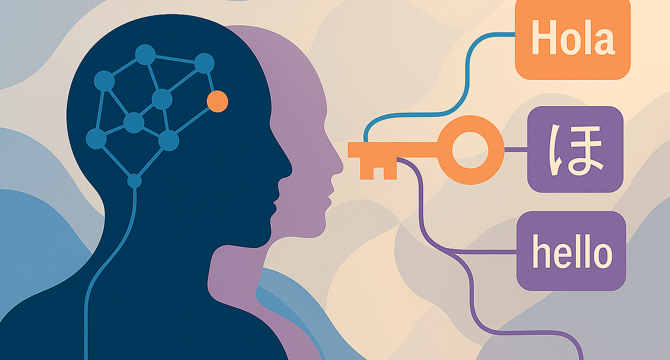Deep Learning News
Medium
159

Image Credit: Medium
Deep Learning Design Patterns in Practice
- Deep learning design patterns are introduced as proven, reusable solutions across various stages of deep learning projects.
- Patterns like Transfer Learning, Residual Connections, Curriculum Learning, Dropout, and Knowledge Distillation are highlighted with practical insights and examples.
- Applying these design patterns results in more robust, scalable, and interpretable models, reducing experimentation time and deployment risk.
- Thinking in patterns provides practitioners with a systematic toolkit for addressing real-world deep learning challenges, transforming chaotic development into structured innovation.
Read Full Article
9 Likes
Medium
230

Enso: The Coding Superpower You Didn’t Know You Needed
- Enso is a visual-first programming language that combines the power of code with visual design, allowing real-time data manipulation and live logic tweaking.
- Enso's feature, Shortcuts, automates repetitive actions, speeds up development, and enables custom logic creation with fewer clicks and less typing.
- Shortcuts in Enso can be mini-scripts for common tasks, macros for structure manipulation, and custom workflows, enhancing efficiency and maintaining workflow continuity.
- Shortcuts in Enso aim to save time, improve productivity, and integrate coding seamlessly with the user's thought process and workflow.
Read Full Article
13 Likes
Medium
350
Image Credit: Medium
Current approaches to LLM safety alignment remain largely superficial.
- Initial skepticism towards AI safety discussions due to polarized discourse.
- Shift in perspective after delving deeper into understanding LLM functionality.
- Conflicted feelings arise from observing both impressive capabilities and shortcomings of LLMs.
- Questioning the fear of LLMs posing existential threats when they struggle with basic tasks.
Read Full Article
21 Likes
Medium
256

Image Credit: Medium
How I Made Thousands with Easy AI Video Creation
- Revio is a revolutionary platform that allows users to create viral videos in minutes using hyper-realistic AI software.
- Users can transform static images or short video clips into engaging talking or singing videos with lifelike emotions and movements.
- Revio offers a one-time fee for unlimited access without hidden costs, allowing users to sell the videos they create for profit.
- The tool simplifies video creation, enables quick generation of videos, and has vast commercial potential in reshaping video marketing strategies.
Read Full Article
15 Likes
Medium
119

Image Credit: Medium
Agent2Agent Protocol Explained
- Google's Agent2Agent (A2A) protocol facilitates seamless communication between AI agents, promoting interoperability and industry collaboration.
- The A2A protocol enables AI agents from different companies or platforms to communicate, exchange data securely, and coordinate actions, breaking down silos in AI collaboration.
- It serves as a universal translator for AI agents, eliminating the need for custom coding or compatibility adjustments, allowing agents using different frameworks to work together smoothly.
- The A2A protocol introduced by Google aims to enhance the collaborative capabilities of AI agents by providing an open standard for communication and data exchange across diverse systems.
Read Full Article
7 Likes
Medium
418

Image Credit: Medium
Unleashing the Power of Nvidia Blackwell Ultra in 2025
- In 2025, Nvidia Blackwell Ultra emerges as a game-changer, revolutionizing AI with unmatched performance and ethical solutions for industry challenges.
- Nvidia unveiled Blackwell Ultra, a marvel promising to redefine AI performance and efficiency, marking a pivotal moment in AI technology.
- Blackwell Ultra, an advancement in the Blackwell architecture, offers enhanced training and inference capabilities with 288 GB of HBM3e memory, enabling handling larger models.
- The release of Blackwell Ultra represents a significant leap forward in AI technology, set to transform how AI is perceived and utilized in various industries.
Read Full Article
25 Likes
Medium
377

CIA trading stands for Covered Interest Arbitrage.
- Covered Interest Arbitrage (CIA) involves borrowing in a low-interest-rate currency, converting to a foreign currency, investing in a high-interest-rate asset, and hedging with a forward contract.
- Key terms include Spot Rate (current exchange rate) and Forward Rate (pre-agreed future rate). Common CIA pairs are USD/JPY, EUR/TRY, and AUD/JPY.
- To practice CIA, choose a currency pair with interest rate differences, check swap rates on a trading platform like Exness, open trades based on positive swaps, hedge positions if needed, and manage risks.
- Practicing CIA on a demo account with Exness helps understand swap rates, test strategies, and get familiar with trading tools before real trading.
Read Full Article
22 Likes
Medium
57

Image Credit: Medium
ML Foundations for AI Engineers
- Intelligence boils down to understanding how the world works, requiring an internal model of the world for both humans and computers.
- Humans develop world models by learning from others and experiences, and computers learn similarly through machine learning.
- Traditional software development involves explicit instructions, while machine learning relies on curated examples for training models.
- Machine learning consists of training (learning from curated examples) and inference (applying the model to make predictions).
- Deep learning and reinforcement learning are special types of machine learning that enable computers to learn about the world.
- Deep learning involves training neural networks to learn optimal features for tasks, surpassing traditional model limitations.
- Training deep neural networks involves complex non-linearities and requires algorithms like gradient descent for parameter updates.
- Reinforcement learning allows models to learn through trial and error, with models improving based on rewards rather than explicit examples.
- Good data quality and quantity are crucial for training machine learning models, as bad data can hinder model performance.
- Machine learning provides a way for computers to align models to reality using data and mathematics, revolutionizing how tasks are learned and performed.
Read Full Article
3 Likes
Medium
230

Image Credit: Medium
The Hallucination Problem: AI’s Final Frontier and the Race to Solve It
- The quest to solve AI hallucinations is compared to the space race, with trillions in economic value at stake.
- The hallucination problem in AI is a longstanding challenge, requiring coherence and autonomy in open-world environments.
- A genuine solution to the hallucination problem would require 99.9% or higher accuracy in real-world contexts.
- Theoretical underpinnings suggest deep limitations in current machine learning approaches related to hallucinations.
- Cracking the hallucination problem could lead to transformative changes in governance, work structures, and human productivity.
- Claims of solving the hallucination problem so far lack the required level of reliability for critical functions.
- Solving the hallucination problem could have profound societal implications regardless of philosophical debates about AI sentience.
- Research continues intensively to explore various approaches to solving the hallucination problem in AI.
- The pursuit of achieving three nines of fidelity in AI remains a critical goal in advancing the field.
- The successful resolution of the hallucination problem could mark a significant milestone in technological development.
Read Full Article
13 Likes
Medium
337

Image Credit: Medium
Effectiveness of Stochastic Gradient Descent in Multilayer Perceptrons
- Gradient descent is crucial in decreasing the loss function of neural networks for accuracy by finding the gradient of the loss function with respect to the weights.
- Stochastic Gradient Descent (SGD) in batches of training data makes the descent less accurate yet more efficient compared to other optimizers like Adam, which is an adaptive learning rate optimizer.
- In testing the effectiveness on MNIST handwritten digits dataset, SGD shows roughly 91% accuracy in 43 seconds, outperforming non-SGD models with an average accuracy of 87.47% in 54 seconds.
- Despite being faster than regular gradient descent, SGD falls short compared to optimizers like Adam and RMSprop, which show higher accuracies and similar training times.
Read Full Article
20 Likes
Towards Data Science
125

The Shadow Side of AutoML: When No-Code Tools Hurt More Than Help
- AutoML simplifies machine learning by automating modeling processes, but it can lead to issues like hidden architectural risks, lack of visibility, and system design problems.
- AutoML tools make it easy to deploy models without writing code, but they can result in unintended consequences when critical issues arise.
- The lack of transparency and oversight in AutoML pipelines can cause subtle errors in behavior and hinder debugging efforts.
- Traditional ML pipelines involve intentional decisions by data scientists, which are visible and debuggable, unlike AutoML systems that bury decisions in opaque structures.
- AutoML platforms often disregard MLOps best practices like versioning, reproducibility, and validation gates, leading to potential infrastructural violations.
- AutoML may encourage score-chasing over validation, where experimentation is prioritized without rigorous testing and model understanding, leading to deployment of flawed models.
- Issues like lack of observability in AutoML systems can cause monitoring gaps, impacting critical functionalities like healthcare, automation, and fraud prevention.
- While AutoML can be effective when properly scoped and governed, it requires version control, data verification, and continuous monitoring for long-term reliability.
- The shadow side of AutoML lies in its tendency to create systems lacking accountability, reproducibility, and monitoring, highlighting the importance of human-governed architecture.
- AutoML should be viewed as a component rather than a standalone solution, emphasizing the need for control and oversight in machine learning workflows.
Read Full Article
7 Likes
Medium
244

Introducing ModernAraBERT: A Bilingual Leap in Arabic-English NLP
- ModernAraBERT is a bilingual Arabic-English transformer model created by the Data Science Team at Giza Systems to enhance cross-lingual understanding.
- The motivation behind developing ModernAraBERT was the need for a model that excelled in Arabic-specific tasks and could compete with well-known Arabic NLP models like AraBERT.
- The model addresses the issues of vocabulary fragmentation and code-switching by incorporating a mix of formal Arabic, dialects, and English texts in its training data.
- Utilizing FarasaPy for Arabic segmentation and token-level data augmentation, ModernAraBERT demonstrated strong performance in both monolingual and code-switched contexts.
Read Full Article
14 Likes
Medium
373

Image Credit: Medium
Neural Processing Unit - the future of AI
- Neural Processing Units (NPUs) are specialized hardware accelerators used for neural networks and machine learning applications.
- NPUs are integrated with CPU/GPU in devices like smartphones, IoT devices, drones, and in standalone form in data centers.
- Major tech companies including Google, Apple, Qualcomm utilize NPUs extensively for various applications.
- NPUs enable efficient inference through parallelism and mixed precision, paving the way for intelligent and power-conscious devices in the AI revolution.
Read Full Article
22 Likes
Bigdataanalyticsnews
66

Image Credit: Bigdataanalyticsnews
Revolutionizing Agentic AI Customer Support with Autonomous Problem-Solving
- Agentic AI Customer Support is revolutionizing the customer support landscape with its autonomous problem-solving capabilities.
- Agentic AIs act independently, making decisions and adjusting responses based on contexts, covering various customer service functions.
- Key features include autonomous decision-making, natural language processing, context awareness, and scalability for efficient support.
- Benefits include 24/7 availability, cost-effectiveness, and improved response times for enhanced customer satisfaction.
- Challenges involve handling complex issues and ensuring data privacy and security in AI systems.
- Core components of agentic AI support encompass NLP, machine learning, automated workflows, knowledge base integration, sentiment analysis, multichannel support, and human handoff capabilities.
- Newton AI Tech leads in agentic AI customer support, utilizing intelligent automation, NLP, personalized experiences, omnichannel support, and sentiment analysis.
- Newton AI offers advanced natural language understanding, self-service solutions, sentiment and emotional intelligence, real-time analytics, scalability, security, and compliance.
- In summary, agentic AI customer support is reshaping customer-business interactions, with Newton AI Tech at the forefront of this transformation.
Read Full Article
4 Likes
Medium
210

Image Credit: Medium
DeepTrans: AI That Learns to Think Before It Translates
- DeepTrans is an AI model aimed at achieving free translation, capturing cultural nuances and intended sentiment.
- It stands out by reasoning through complex texts to generate accurate and contextually resonant translations.
- DeepTrans was detailed in a research paper by Jiaan Wang, Fandong Meng, and Jie Zhou in April 2025.
- It departs from traditional translation methods by incorporating deep, multi-step reasoning in its approach.
- The model uses a combination of Reinforcement Learning and a structured output approach for translation.
- Training involves a 'Think First, Then Translate' architecture, leveraging the Qwen2.5–7B model and the GRPO algorithm.
- An innovative reward system involves another LLM, DeepSeek-v3, as a judge for feedback.
- Performance evaluation metrics for DeepTrans include GEA5 and GRF, focusing on literary translation quality.
- DeepTrans demonstrates impressive results, especially in the reinforcement learning phase using only source sentences.
- Future research can explore reducing biases, expanding to more languages, and enhancing computational efficiency.
Read Full Article
12 Likes
For uninterrupted reading, download the app